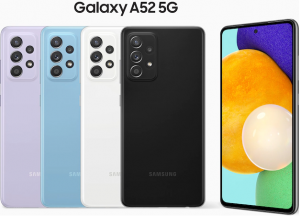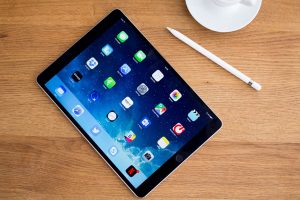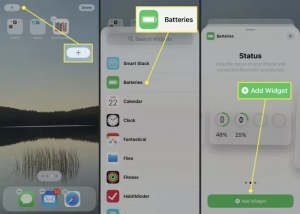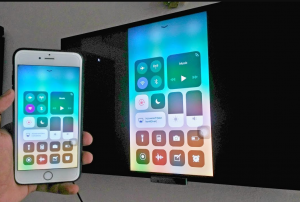Apple provides many hardware and software updates to keep you healthy – one such app is Apple Health. This app aims to help get your health information and organize it so it’s easily available in a secure and central place. You can get helpful information about your mental and physical health with a single click.
The Apple Health app gives you easy access to essential health information like medical records, medicines, test results, physical activity, and sleep. Also, it lets you safely share this information with others. It gathers health and fitness data from your iPad, iPhone, the sensors in your Apple Watch, accessories, and other third-party apps. The Apple Health app is designed to keep your information safe and private. Your data is locked, and you completely control your health details.
Read the full article on the Apple Health app for more exciting details about this fantastic app, its features, and how it can help upgrade your lifestyle.
What is the Apple Health App?
Apple introduced the Health app in 2014 and has been improving it since then. In recent years, Apple added new features like ECG and sleep tracking, allowing other apps to work with it. For example, if you use fitness apps like Zwift or Nike Run Club or nutrition apps like Weight Watchers or MyFitnessPal, the Health app can collect data from them, too.
The Apple Health app helps you organize and access your important health information. It uses smart technology to determine which health measures are most beneficial for you and shows you as “Highlights” on the main screen. You can also choose your favorite categories and add your data.
Health App covers four main areas: activity, sleep, mindfulness, and nutrition. When you set up your Health App properly and customize it according to your personal goals, it will become very easy for you to set and achieve your health goals.
If you have an iPhone, you can use the Health app to track your steps, distance, speed, and even how long you sleep. However, if you want to get all the benefits of the Health app, you should think about getting an Apple Watch or a similar wrist wearable like a Fitbit. It will add extra features because it connects to more sensors, like those for heart rate, ECG, and blood pressure, giving you more precise data.
Apple Health Features
The Health app and HealthKit were launched in iOS 8 for the first time. Since then, they’ve improved the Health app and added more data with each software update. Here are some amazing features of this app:
- Activity Tracking
- Privacy
- Apple Watch
- Third-party Apps and Devices
- Sleep Tracking
- Food Tracking
- Weight loss
- Medication
- Medical ID
- Body Composition and other measurements
- Stress and mindfulness
- Health Records
- ResearchKit
Activity Tracking
The Health app’s activity section is super helpful. When you open the app and check out the activity icon, you’ll find two main parts of information: your daily activity and a summary of your whole year.
The Health app uses your iPhone’s built-in sensor (accelerometer) to keep track of your steps and how far you’ve walked or run. Just keep your iPhone with you to ensure the numbers are accurate.
If you wear an Apple Watch, you’ll see even more detailed information here. It will show things like how often you stand, how many calories you’ve burned, your exercise minutes, and more. Plus, using the Workout app on your Apple Watch, you can see specifics like how far you’ve run, cycled, swam, or even skied downhill.
But if you don’t have an Apple Watch, you can still add info to this section by importing data from other fitness trackers like Fitbit or Garmin. And if you don’t have a fitness tracker, you can get a detailed view of your activity using third-party apps. Apps like Nike+ (Run Club and Training Club), Gymaholic, Pocket Yoga, Strava, MyFitnessPal, and others can send workout data to the Health app.
Privacy
The Apple Health app lets you control what information you want to share with other third party apps. When your iPhone is locked, all your health data (except for your Medical ID) is kept super secure with end-to-end encryption. Even when it passes through iCloud, it stays fully encrypted.
Moreover, you can read the privacy policy of HealthKit that tells you exactly what data the app is collecting and how Apple plans to use it. You can find this information on the app’s privacy policy and on Apple’s App Store privacy page.
However, you can relax as nobody, not even Apple, can look into your health data without clear permission. Your data is locked up with encryption, and without the correct key, nobody can unlock it. This super-strong security keeps your data safe and ensures it doesn’t accidentally leak out from the server or your device.
Apple Watch
The Apple Health app collects all the data from your Apple Watch, including health alerts. The Apple Watch has sensors like the iPhone, such as a gyroscope, an accelerometer, and GPS. It also has a heart-rate sensor that keeps track of your pulse rate data that you can check manually anytime in the day.
The newer Apple Watch models can do even more, starting from Series 4. They can measure your heart’s electrical activity (ECG); in the case of Series 6, it can even track your blood oxygen levels. You can see all this data in the Health app.
Your Apple Watch is smart enough to monitor your heart rate in the background and look out for any unusually high or low rates. If it detects your pulse going above 120 beats per minute or dropping below 40 beats per minute while you’re not doing anything for 10 minutes, it’ll give you an alert in the form of a notification. You can adjust these heart rate alerts in the settings.
There’s also an excellent ECG app on the Apple Watch that uses sensors in the Digital dial and the back to record your heart’s electrical activity. It can tell you if your heart is beating normally (sinus rhythm) if you might have atrial fibrillation, or if it’s unclear. This info can help you find potential heart issues you didn’t know before.
And for safety, the Apple Watch has a feature that can detect if you’ve fallen. If you’re unresponsive for a minute after a fall, the Apple Health app automatically calls for help and informs your emergency contacts. This feature is on by default for people above the age of 55 and older, but younger people can turn it on in the Apple Watch app or on their iPhones. Moreover, the Health app also works with Apple Fitness+, a home workout service that will be launched soon.
Third-party Apps and Devices
Apple Health is like a central hub for all your health and fitness info. It tracks what your Apple devices record and gathers data from other apps made by different companies. Here’s how it works: App makers use Apple’s special tools, called HealthKit and GymKit, to connect their data with Apple Health. This means your health-related information from apps like MyFitnessPal, Strava, and Nike Run Club can all come together in one place.
And it’s not just about workouts. Apple Health can also handle data from apps that track what you eat, your meditation sessions, and even your menstrual cycle. During the COVID-19 pandemic, Apple added a new section called “Symptoms.” Here, you can describe things like having a fever or feeling congested and then share that info with other apps.
It’s not just Apple devices that can play nice with Apple Health. Other companies’ fitness apps and devices, like Fitbit and Garmin, can also send their data to the app. So, if you’ve got a FitBit watch or Garmin tracker, you’re still in the Apple Health club. And it’s not just wearables. Smart scales, devices tracking your sleep, and even things like Peloton exercise bikes can all link and sync with Apple Health.
Sleep Tracking
Sleep is essential for reducing stress, controlling weight, improving focus, and making better food choices. But the point that needs attention is that many of you sleep far less than you should.
Your iPhone can help you monitor your sleep. It has a feature called Bedtime in the Health app. Set the time you want to go to bed, and your phone will remind you when to sleep. You can also set a wake-up time, and your phone will wake you up.
Although Apple Watch doesn’t have a built-in sleep-tracking feature yet, you can find apps in the App Store that track sleep. There’s also an excellent accessory called Beddit that you can sync with your Watch and iPhone. It tracks how long you sleep and checks your breathing, heart rate, snoring, and even the temperature and humidity in your bedroom.
And if you’re looking for even more sleep insights, there are iPhone apps like Sleep Cycle. They track your sleep duration, the quality of your sleep, and the different stages you go through during the night, and they can even wake you up at the best time. So, along with the Apple Health app, plenty of tools are available to help you get a better night’s sleep.
Food Tracking
It can be a time taking task to keep track of what you eat, especially if you want to focus on specific nutrients like calcium or iron in your diet. You can easily record your nutrient intake with the Health app’s nutrition feature. You can record how many calories you’ve consumed as “dietary energy.” This makes it simple to compare your food intake with the calories burned during activity.
However, with the updates in iOS 15, tracking your food is now even easier. You can use your iPhone’s camera to scan nutrition labels. You don’t need to type in each item one by one. This feature uses Live Text, saving you time and effort.
Weight loss
Many people keep an eye on their food and nutrition when they want to lose weight. If that’s your goal, the Health app can prove to be very helpful tool to stay on the right track.
To start tracking your weight loss, follow these steps:
- Open the Health app and tap “Health Data.”
- Look for “Body Measurements.” If you’ve added your weight information before, you’ll see it at the top in orange.
- But if this is your first time, tap “Weight” under “No Recorded Data.”
- If you want to add your weight manually, click on the plus (+) icon shown at the top right corner and type in your weight.
- Once you’re done, tap “Add” to save it.
The Health app records all your weight data, whether you’ve entered it yourself or it came from other apps or smart scales connected to your Health app. You can check your weight anytime and see how it’s changed over the week, month, or even year. It’s helpful to monitor your progress as you work towards your weight loss goals.
Medication
With the update in watchOS 9, the Apple Watch gets a new app to help you keep track of your medications. You can use this app to record which medicines you need to take and when you should take them.
What’s remarkable is that this app will also give you information about how different medications might interact with each other. It checks against an official database of drugs. So, if you’re about to add any medicine to your previously prescribed medication, and they don’t mix well together, the app will alert you about it. It’s all about making sure you stay safe and informed when it comes to your medications.
Medical ID
If you’re in the United States and use the Health app on your iPhone, there’s a special feature called Medical ID that can be really helpful in emergencies. Medical ID is like a digital card where you can put important information. You can include things like your name, birthdate, any health conditions, notes about your health, allergies, the medications you take, your blood type, how tall you are, how much you weigh, whether you’re an organ donor or even emergency contacts.
The best part is, you don’t have to use it if you don’t want to. It’s totally up to you what information you want to add. You can decide if you want this Medical ID to be visible on your iPhone’s lock screen during an emergency call. It’s a way to ensure that if something happens, the people helping you know important things about your health.
Body Composition and other measurements
The Health app is not just about tracking your weight; it can also help you keep tabs on other important health measurements. You can enter details like your height, body fat percentage, body mass index (BMI), lean body mass, and waist circumference.
These measurements are helpful for various health goals. For example, if you want to build muscles, you should pay more attention to your body composition than just your weight. And if your main aim is to improve your overall health, your waist size will be a better indicator than your weight.
To manually add these metrics, you can follow the steps you used to enter your weight in the app. Also, if you use other apps like Fit Journey that track these measurements, that data can be shown in the Health app. Fit Journey is a comprehensive app that covers all these body measurements, notes, and progress photos, and the Health app can collect that data too.
Stress and mindfulness
Apple doesn’t have a lot of built-in features for mindfulness in the Health app, but there is a feature called Mindful Minutes on the Apple Watch. However, you’ll need to use a third-party app to make the most of the mindfulness aspect, especially if you don’t have an Apple Watch.
One recommended app for this purpose is called Breathe. It helps you take short breaks to focus on your breathing and de-stress during the day. You can customize it by telling the app how many times you want it to remind you to take these breaks and during which hours. For example, if a lot of workload makes you stressed, you can ask Breathe to remind you to take short breaks between 9 a.m. and 5 p.m. It’s very helpful for you to stay mindful and reduce stress.
Health Records
You can automatically upload your medical records into the Health app, but your healthcare provider needs to be part of this program. Apple works with many top medical institutions to make this happen, and a big one is the U.S. Department of Veteran Affairs.
When your healthcare provider updates your medical records, all that info gets copied into your Health Records section in the app. This is handy, especially if you need to move your data between different medical facilities. You can also take some or all of your health data and send it to your doctor using the app. It’s a way to ensure your medical information is in one place and can be easily shared with your healthcare team.
ResearchKit
If you have an Apple Watch, you can volunteer for medical studies. Apple teams up with hospitals and universities to gather health data. They study heart health, physical activity, women’s health, and hearing. To join, you can sign up through the Apple Health app. Then, it’ll add a special Research app to your device. You can participate in these studies if you have an Apple Watch and meet the requirements.
Conclusion
The Apple Health app is powerful for managing and improving your overall health and well-being. It is a central hub for various health metrics, allowing you to monitor your activity, sleep, nutrition, and more. With features like medication tracking, medical ID, and access to health records, it helps you stay organized and informed about your health.
The app’s integration with Apple Watch and support for third-party apps and devices make it even more functional. You can track everything from your heart rate and ECG to your sleep patterns and dietary intake. Plus, the option to participate in medical studies through the app contributes to ongoing research in the health field.
Apple prioritizes privacy and security, ensuring that your health data remains protected and under your control. Whether working towards fitness goals, managing a medical condition, or simply aiming for a healthier lifestyle, the Apple Health app offers a comprehensive solution to help you achieve your objectives. With continuous updates and improvements, it continues to evolve as a valuable tool for enhancing your overall quality of life.





